Experts Share 19 Tricks To Save Money on Plant-Based Groceries
About the experts
|
Highlights
|
If you’re looking to eat more plant-based foods , you don’t have to spend a lot of money. A vegan or vegetarian diet—or one simply that has more plants added to it—can be affordable in you know how to save money on groceries, and, in many cases, they can cost less than following a traditional diet. So yes, you can still eat plant-based on a budget.
“When people think of plant-based eating, they think they need specialized products,” says Bridget Wood, RDN, CDCES, a registered dietician nutritionist in Reno, Nevada. “But you can get the job done with things like beans, legumes, nuts, tofu, edamame, vegetables, fruit, and whole grains. These items are often more affordable than the packaged convenience plant-based foods and can be more nutritious as well.”
Think of it like this: You’re going to want a protein with dinner. Well, at FreshDirect, you can get turkey breast for $8.29 a pound or steak for a minimum of $10.99 a pound (and the price goes up considerably for more popular cuts)—or you can get 14 ounces of organic tofu for $3.69. The plant-based option costs significantly less.
Why follow a plant-based diet
Before we jump into how to save money on groceries, let’s talk about what plant-based eating means.
Unlike a vegan or vegetarian diet, a plant-based diet may include some meat and animal products, as well as poultry and seafood. So you can be a vegan eater and follow a plant-based diet—or you can be a flexitarian on a plant-based diet. (A flexitarian diet leans towards plants without completely cutting out meat.) Eating a plant-based diet simply means eating more plants, including plant-based protein .
“Because a well-planned plant-based diet will include an overall abundant intake of powerful, health-protective vitamins, minerals, and plant nutrients, it offers many health perks,” says Beth Stark, RDN, LDN , a registered dietician nutritionist with a private practice in Harrisburg, Pennsylvania. “This includes a lower risk for chronic diseases like heart disease, diabetes, and certain cancers. A plant-based diet also promotes a healthier gut, thanks to a higher fiber intake.”
Of course, to get those health benefits, you need to eat balanced meals. Think of a protein (for instance, tofu, beans, nuts, or seeds), a healthy fat (such as avocado, olives, or olive oil), a whole grain (like brown rice, quinoa, or oats), and a vegetable or fruit at every meal.
“A plant-based diet isn’t a healthier option and won’t deliver positive health benefits when it’s lacking in nutrient-dense foods,” adds Stark.
Now that we’ve gone over the whys of following a plant-based diet, let’s talk about how you can lower your grocery bill.
1. Plan around what will spoil first
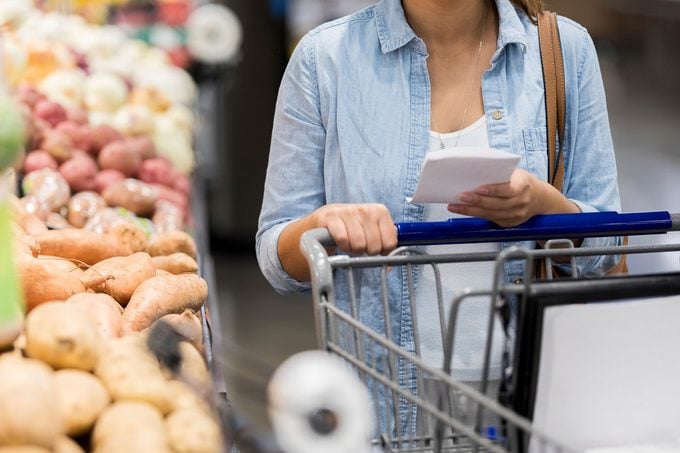
“Before shopping, always create your upcoming week’s meal plan to focus on fresh ingredients that are verging on the end of their shelf life and need to be used up,” says Stark. “This step prevents you from buying duplicate ingredients that might go to waste, ultimately causing you to throw dollars right in the trash.”
Apps can seriously help support this meal planning process, explains Erika Allen, MA, PhD , the founder and CEO of Urban Growers Collective, an organization focused on community food security. With apps such as Whisk or Crumb , you can input what ingredients you already have—and the app generates recipes based on that list.
2. Buy in bulk
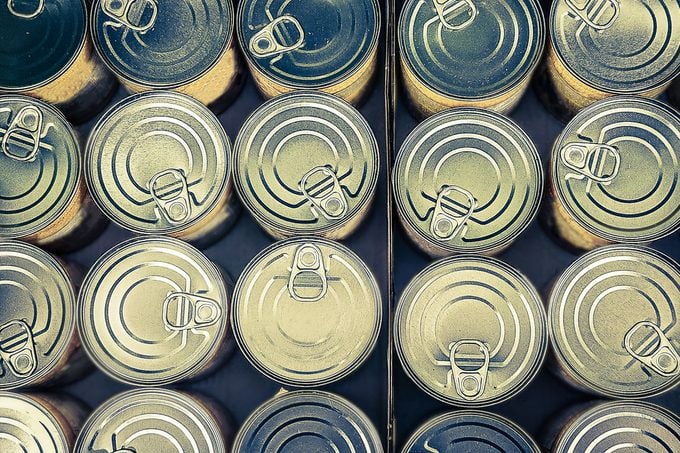
“Shop in bulk, especially for dry goods or canned goods,” says Julia Zumpano, RD, LD, a registered dietitian with the Cleveland Clinic Center for Human Nutrition. Research from the University of Massachusetts Amherst estimates bulk items, on average, come at about a 30% discount.
Based on this average, the researchers suggest that buying items you use often in bulk can save a household at least 5% on their grocery bills. But just because something has a lower per-unit price in bulk doesn’t automatically make it more cost-efficient. Avoid food—and money—waste by focusing your bulk buying on foods that you use a lot of day-to-day, Zumpano advises, whether that’s oats, rice, other grains, applesauce, or (plant-based) yogurt.
Another pro tip? Whether you’re buying in bulk or individually packed items, choose generic store brands. “Avoid brand names,” Zumpano says.
3. Batch cook whole grains
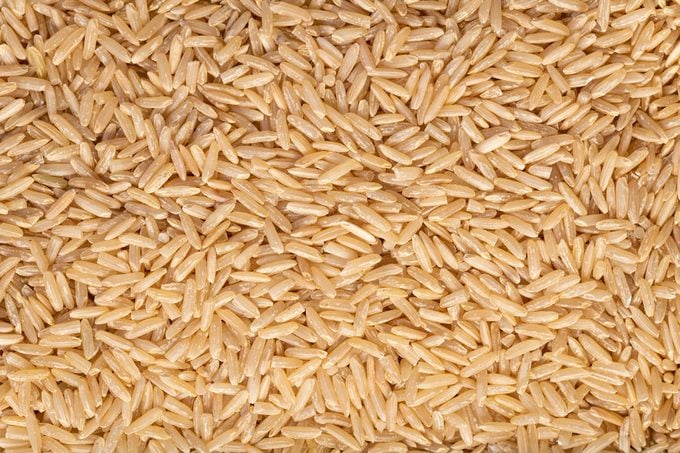
“Prepare a big batch of your favorite whole grain, like super budget-friendly brown rice , at the beginning of the week to incorporate into quick meals like grain bowls, salads, casseroles, tacos, or stir-fries when you’re especially time-pressed,” says Stark.
“Rice is one of the most affordable plant-based grains that can be nicely enjoyed as a meal’s key ingredient or a complementary side dish. It’s also great for stretching portions while adding a nutrition boost.”
Dried legumes like lentils and beans are also great for cooking in large quantities—and you can freeze them in smaller portions so they’re easy to grab for meal prepping, says Sandra Zhang, MS, RDN, LDN, Registered Dietician Nutritionist and Pediatric Dietitian at the Frances Stern Nutrition Center at Tufts Medical Center.
4. Plan several meals with the same protein
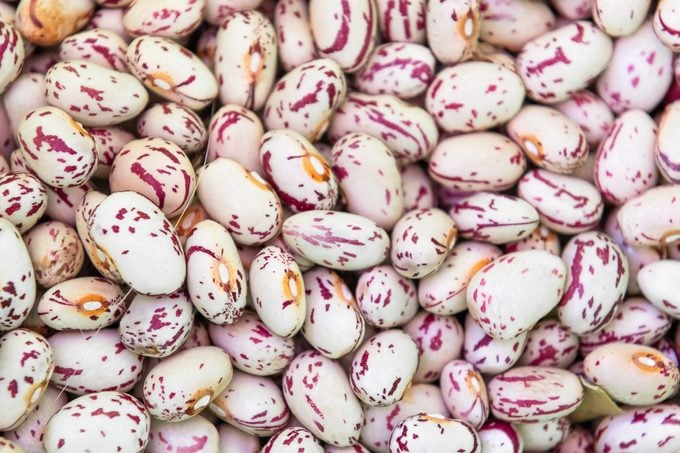
“If you have two to three meals or snacks that will use pinto beans, it’s easy to cook a batch on the weekend and use these throughout the week to create several different meals,” says Kelsey Lorencz, RD , a plant-based registered dietitian in Saginaw, Michigan. “By bulk cooking one ingredient, you could make a beans-and-greens quesadilla, add the beans to a tofu and veggies scramble, and mash some up as a sandwich spread. Through meal planning and prepping, you can make delicious and seriously cheap plant-based meals at home.”
A high-quality protein like beans is quite affordable—especially if you buy in bulk—but dried beans are usually even more economical, says Zhang.
According to FreshDirect :
- A can of Goya black beans costs $1.59 per can—about $0.45 per serving.
- A bag of dried Goya black beans costs $2.29—about $0.22 per serving .
5. Freeze produce
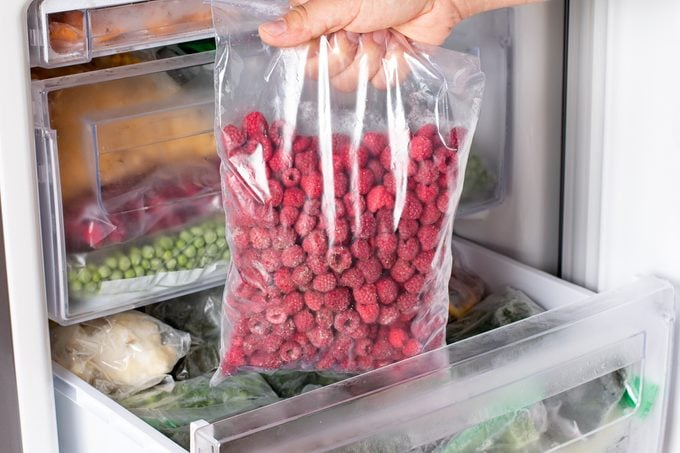
Have extra cauliflower from salad prep or extra bananas that went brown too fast? Freeze them in freezer-safe zip-top bags. You can use them to make a cauliflower smoothie for a plant-based breakfast or chocolate banana nice cream for a plant-based dessert.
Freezing isn’t just for leftovers, either—it can be a part of your meal prep, Zhang says. If you score a great deal on bulk veggies (or have extra in your fridge that you’re wondering what to do with), freeze the vegetables by:
- Chopping the vegetables up
- Blanching the vegetables, either by boiling or steaming for 2 to 3 minutes
- Immediately transferring the blanched veggies to an ice bath
- Draining and patting the veggies dry
- Flash-freezing the vegetables by spreading them out on a tray in the freezer
- Once frozen, transferring to freezer-safe bags or containers
Some plants, like peppers, onions, garlic, and herbs, don’t even need to be cooked/blanched before freezing.
6. Use the whole plant
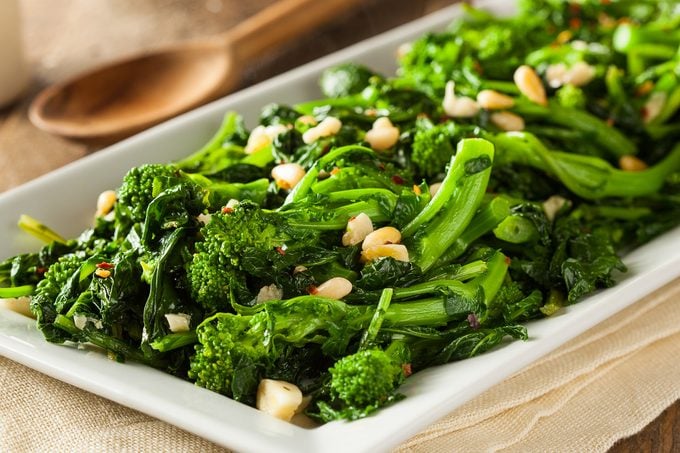
“Maximize your money and minimize food waste by finding creative ways to use every last bit of your produce!” says Dani Lebovitz, MS, RDN, CDDS, CDCES, a pediatric dietician and owner of Kid Food Explorers . “For example, use the whole broccoli from florets to stalk.”
You can roast the florets and make soup, sauté the stalks, or shred the stalks into a broccoli slaw salad, she says.
According to 2023 research published in Food Nutrition Chemistry , parts of plants that we often throw away—such as leaves, stalks, and pods—are extremely nutrient-dense, and by discarding them, we’re missing out on valuable macronutrients, vitamins, minerals, and antioxidants.
Other ways to use up produce scraps can include:
- Blending leaves into a pesto or sauce
- Adding leaves to a salad or sandwich
- Adding stems or stalks to a stir fry
- Pickling stems
- Adding scraps to a broth
- Keeping fruit peels for grating, garnishing, or pickling
7. Start gardening
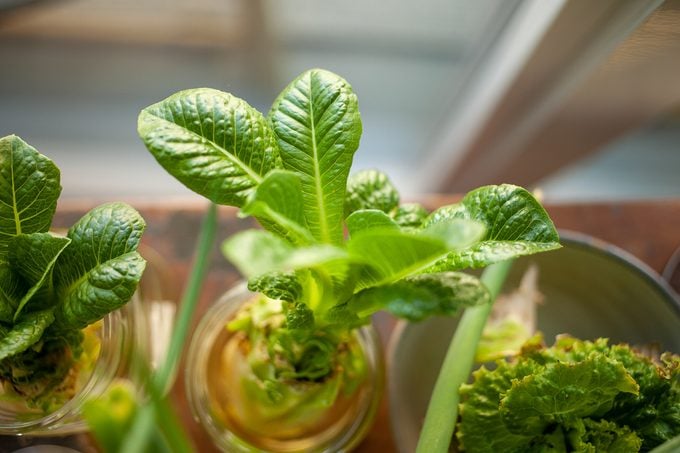
“Plant a garden,” says Toby Smithson, RDN, CDCES, FAND , a registered dietician and senior manager of nutrition and wellness for the American Diabetes Association. “Start with a hydroponic garden indoors to get a quick start to growing your vegetables and herbs.” If you grow a few staple herbs—think basil, oregano, and cilantro—you can clip as you need and avoid adding these to your grocery bill.
“If you grow a little of your own, you can splurge on ‘fixings’ that boost the flavor experience and stretch [the protein] over several meals,” says Allen. For example, microgreens (like sunflower sprouts, pea shoots, and arugula) and herbs don’t need much room to grow—perfect for a kitchen countertop garden —and you can often freeze what you don’t use.
That said, gardening is not feasible for everyone, says JaLorean Hayes MPH, BSN, RN, IFNCP , a registered nurse, public health expert, and founder of Meal Maps . “Purchasing from local growers and farmers can help with cost, [food] quality, and the community.”
8. Avoid mock meats
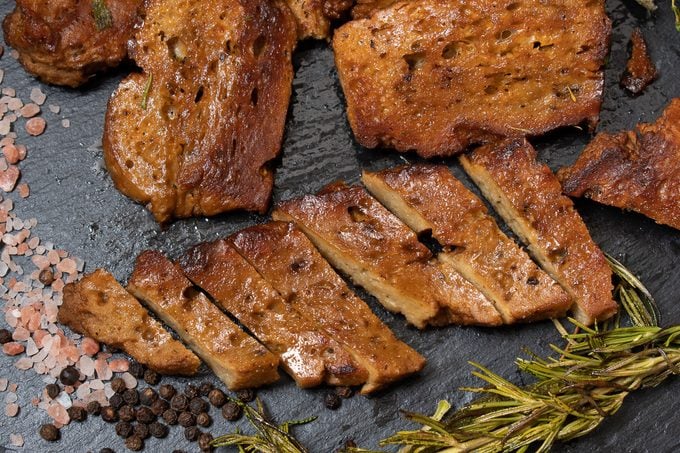
“Avoid using a lot of plant-based convenience foods such as mock meats and cheeses, as the price can be pretty hefty on these pre-packaged foods,” says Lorencz.
“Black beans, chickpeas, lentils, really all the legumes, and mushrooms are so affordable, and you can do so many tasty twists on meaty faves,” Allen says. “I love lentil loaf—it’s high protein and a great way to get extra fiber.”
Or, instead of splurging on mock ground meat, crumble up firm tofu or tempeh to get a similar texture in a plant-based chili or bolognese. For meatier dishes, seitan is a very versatile, high-protein alternative, too.
“Get creative and make your own granola or protein bars ,” adds Zumpano. Not only will you save by using raw ingredients (especially if you’re getting them in bulk,) but you avoid additives like preservatives and added sugar found in pre-packaged versions. Here are some of our favorite recipes for homemade protein bars .
9. Choose protein strategically
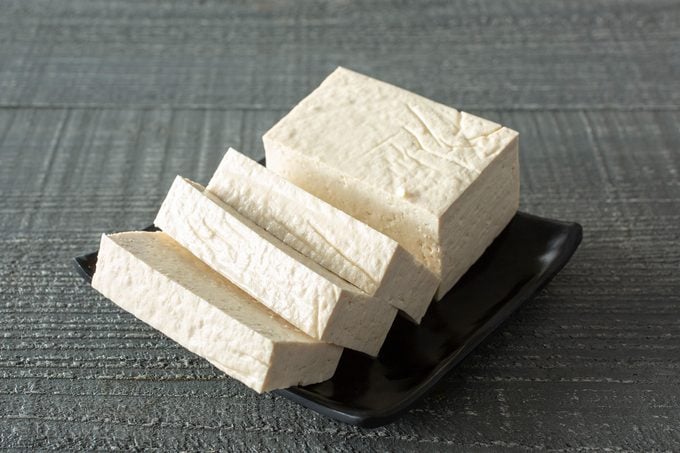
“Stick to the basics,” Zumpano advises. “Tofu is much less expensive than meat alternatives.” Mock meats and plant-based alternatives for animal products are pricey—but they’re also not as healthy as you think they might be. Processed products tend to be loaded with sodium and often lack the nutrients and fiber you’d get from natural plant-based protein.
“Your best sources of natural plant-based protein are tofu and legumes—both very economical,” Zumpano says. “Buy dried legumes, which are very inexpensive compared to canned, and use a crock pot or pressure cooker to cook them in bulk, then store them in the fridge or freezer.” The canned versions are still a good bet if you don’t have time to prepare dried legumes, she says—you can save big on groceries by buying multipacks.
Zumpano also recommends keeping an eye out for sales on milk alternatives—and if they’re shelf stable (meaning storage at home won’t be an issue), drive the price down by buying in bulk.
For some protein-packed inspiration, here are six high-protein plant-based meals nutritionists love .
10. Buy frozen and canned produce
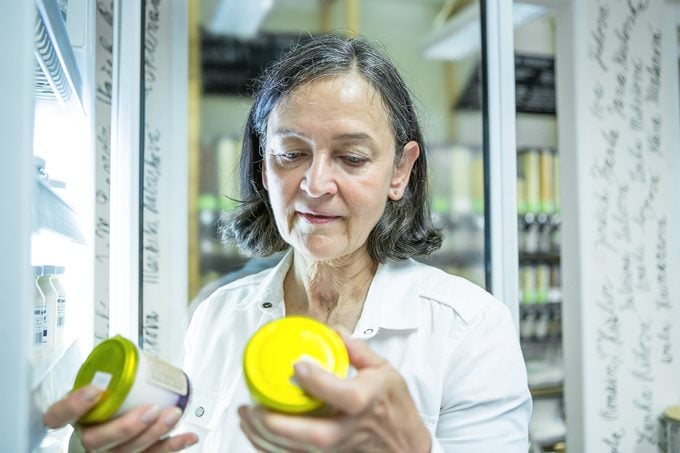
“For produce, check out the price of frozen versus fresh—it can be a significant cost savings,” Zumpano says. She points to berries, asparagus, green beans, and broccoli in particular as costing much less in the freezer section compared to the produce aisle.
Plus, frozen products can come with added nutritional benefits. “Fresh produce isn’t a requirement for nutritious foods,” says Wood. “You can get nutrients and vitamins from canned and frozen produce for a fraction of the price and effort! Frozen fruit and vegetables have the same nutritional benefits as fresh without the time limit and prep time.”
In fact, research has shown that frozen produce is comparable to fresh produce—and in some cases, frozen items are nutritionally superior. One study published in the Journal of Agricultural and Food Chemistry found that frozen corn, carrots, broccoli, spinach, peas, green beans, strawberries, and blueberries sometimes retain more nutritional value than their fresh counterparts.
Fresh produce can also degrade before it even makes it to your shopping bag, depending on factors like storage, packaging, and transport, according to 2023 research published in Food Packaging and Shelf Life . (Another reason to buy local when you can!)
Canned produce can lose some nutritional value during manufacturing, but the Food and Agriculture Organization (FAO) says that nutrient loss isn’t very significant.
And yup, looking at prices, canned and frozen produce consistently comes out on top, per FreshDirect:
- A 14-ounce can (three servings) of diced tomatoes is $1.99, whereas a pound of fresh tomatoes (three servings) is about $3.14
- A 12-ounce bag of frozen blueberries is $5.99, while 12 ounces of fresh blueberries is $7.98
- If you’re bulk buying, a 3-pound bag of frozen blueberries is $17.69, whereas 3 pounds of fresh blueberries would cost $31.92
- Organic frozen broccoli costs $0.35 per ounce, while a pound of fresh, non-organic broccoli florets costs $0.37 per ounce.
11. Choose organic food wisely
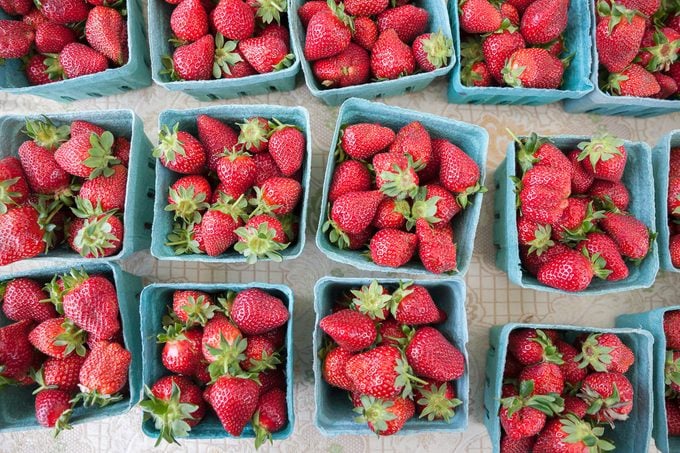
“ Organic food is more expensive,” Zumpano says. Organic farms tend to have higher labor costs, more expensive farming methods, and produce less food—all of which drive up costs that fall onto you, the buyer.
That said, some produce may justify the higher cost of buying organic because of heavier pesticide exposure. The Environmental Working Group (EWG) calls these the “ Dirty Dozen ,” which includes:
- Strawberries
- Spinach
- Kale, collard, and mustard greens
- Grapes
- Peaches
- Pears
- Nectarines
- Apples
- Peppers
- Cherries
- Blueberries
- Green beans
If you want to include organic food in your diet, stick to these dirty dozen, Zumpano says. For other produce, like the EWG’s “ Clean Fifteen ,” save money by going for non-organic varieties.
12. Buy on-sale foods
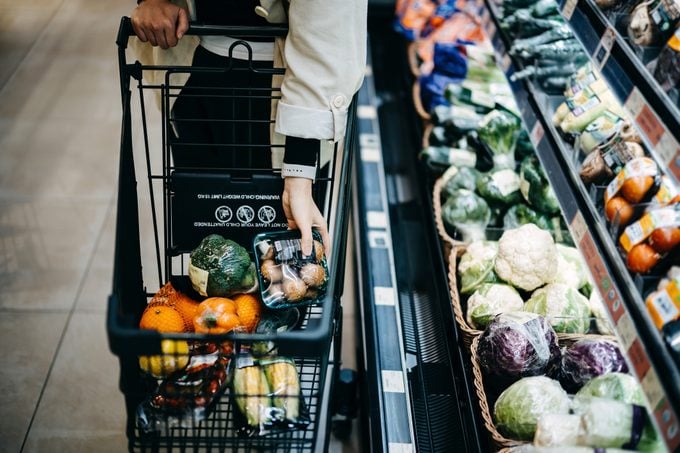
“One of the best bargains in the supermarket is to buy foods that are marked down in price,” says Joan Salge Blake, EdD, RDN, LDN, FAND , a nutrition professor at Boston University and host of the nutrition and health podcast Spot On! “This will help make your food budget go farther and help save the planet.”
“Here’s the real deal on foods on sale,” she says. “The supermarket must adhere to the ‘sell by’ date on the food product. To eliminate food waste—which is a good thing as we don’t want healthy, edible foods being tossed and ending up in a landfill—they will mark the food down before the ‘sell by’ date in hopes that you will buy it so they don’t have to toss it. Buy these healthy foods at bargain prices and either use them immediately or put them in your freezer for use later.”
(If you’re unsure, these are the food expiration dates you should stick to.)
13. Shop around
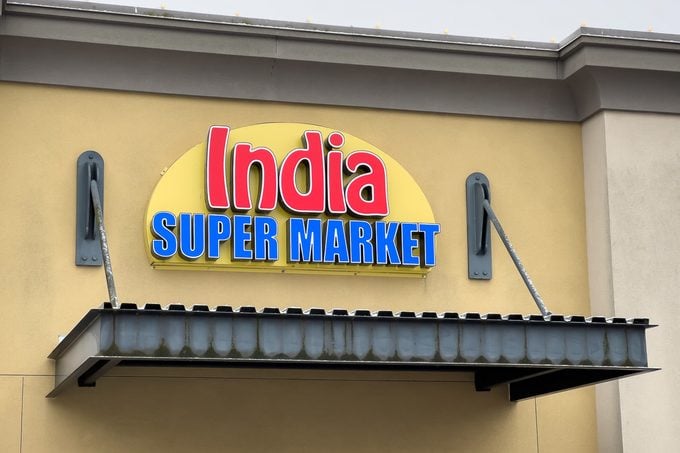
Need saffron or tofu? “Shop at ethnic markets to find better pricing—for example, Indian grocery stores for spices and Asian markets for tofu,” says Vandana Sheth, RDN, CDCES, FAND , a registered dietician nutritionist and author of My Indian Table .
Still, even with everyday items, you may need to go to two different grocery stores to get the best price, Zumpano says.
“ Supply and demand has long been a contributor to how things are priced,” Hayes explains. “Things that have a surplus are usually put on sale to encourage consumers to purchase.”
Some of these on-sale items may have a close “best by” or “sell by” date, but don’t let that deter you. According to the USDA , this date just indicates when a product will be at peak quality or flavor—it’s not a safety date. “Just make sure to use them soon,” Zhang recommends.
14. Find major savings using apps

As Zumpano recommends, hitting up multiple stores can help you find the best savings—but you can plan ahead at home using grocery store apps.
Many grocery chains today have their own apps, so you can check out prices ahead of time. These apps also offer insight into current sales and often have in-app exclusive deals based on what the store has an excess of at a given time.
There are also specific apps designed to help reduce food waste and increase the availability of affordable food. Too Good To Go partners with local restaurants, bakeries, and cafes to allow you—the consumer—to buy surplus or unsold food that would otherwise go to waste at a deeply discounted price. Flashfood works on a similar model but partners directly with grocery stores. Every day, the app updates with surplus items from local stores that cost up to half their original price.
15. Clean your pantry and fridge
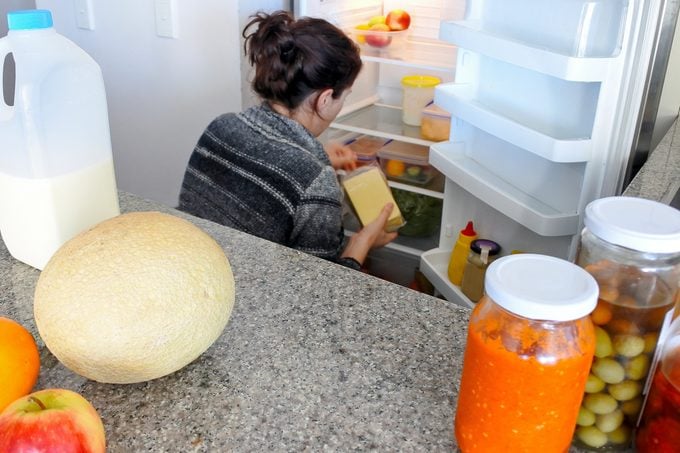
“Clean up your pantry or fridge ,” Zhang says. “Depending on your schedule, find a day in a week or month to check if you have unused foods that are going bad and use them up.”
Keeping your fridge and pantry tidy also helps prevent overbuying, as it’s easier to see what you have, so you don’t accidentally get duplicates.
What’s more, according to the USDA , keeping your fridge clean ensures it’s cooling your food at safe levels (if it’s too warm, this encourages bacteria to multiply—spoiling food faster). You also lower the risk of mold and bacteria in your fridge from contaminating food, encouraging faster spoilage.
And to help keep your food fresh for longer, make sure to avoid keeping these 16 foods in the fridge .
16. Buy seasonal
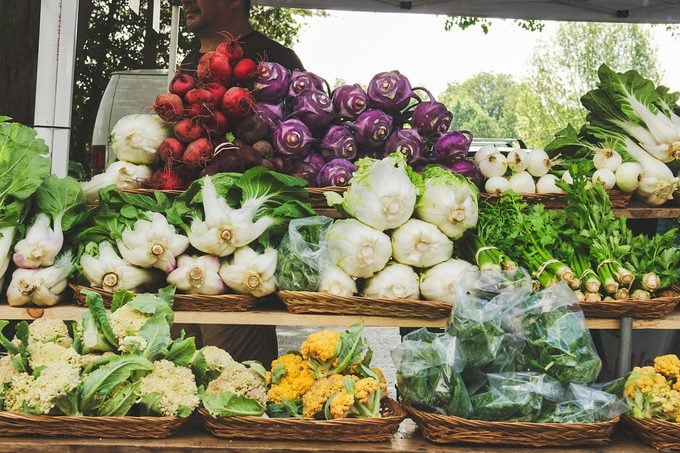
“When we shop produce in season , we get the benefits of fresher food at a lower cost,” Hayes explains. “Produce that is out of season usually travels farther, increasing the costs by the time it reaches the store shelves.” Supply chain factors like distribution and storage also impact a food’s nutritional quality.
Seasonalfoodguide.org can help you figure out what produce is in season in your area to choose foods that will be cheaper and more nutrient-dense, Allen says.
And when you can, buy local, Zhang emphasizes. Shopping at local farmer’s markets or local farms can cut costs significantly because you’re not paying a premium for shipping, storage, and packaging.
17. Get a produce saver
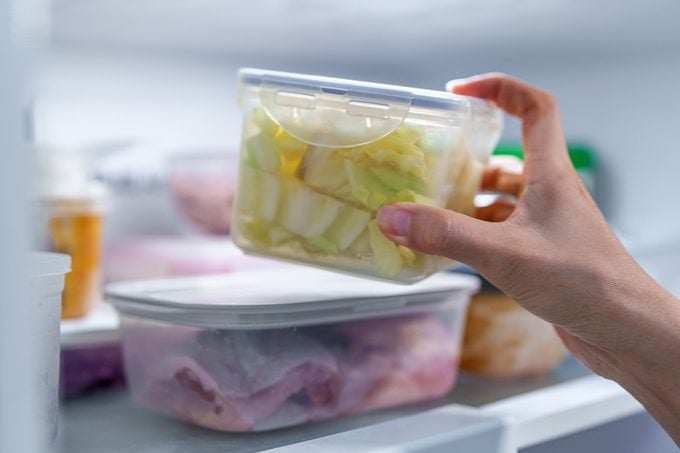
“Invest in a produce saver,” Hayes recommends. “ This can be in the form of specialty containers, storage bags, or ethylene gas absorbers.”
She points to Bluapple as her favorite brand for ease of use, cost-effectiveness, and environmental friendliness. The Blueapple is a small blue apple-shaped product that absorbs ethylene gas. Fruits and vegetables naturally release this gas, but it speeds up spoilage when the gas gets confined and concentrated in your fridge.
But there are tons of similar products available that absorb ethylene gas, potentially extending the shelf life of your fruits and veggies by an extra week or two.
18. Avoid costly food traps

Spice blends can be pricey—and they often go bad before you finish using them. Make your own and use up ingredients like crushed red pepper and dried basil, for instance, when blending your own pizza seasoning. Here are 13 other copycat spice blends from our sister site, Taste of Home .
Zumpano says to also be wary of snack foods that are marketed as being “healthy,” such as pretzels, baked chips, veggie straws, trail mix, or deli meats. These often come at a high price point for little nutritional value.
However, not all processed foods are evil, says Zhang. “Learn to read nutrition labels and ingredient lists to pick the best packaged foods for your needs” without breaking the bank.
But when you can, “buy whole ingredients and make [things] from scratch,” Zhang says. For instance, pre-cut fruits and vegetables or salad kits are more expensive than whole fruits and veggies—and they tend to spoil faster, too. Another idea: “Make your own snack mix and be more in control of what nutrients you are getting.”
Whole foods (as in natural or minimally processed) also help provide different nutrients, she explains. “Whole fruits and vegetables not only have vitamins, minerals, and fiber, they also have phytonutrients that are hard and expensive to make,” she says. “Getting these different nutrients from whole foods is usually cheaper than buying dietary supplements.”
19. Use local resources
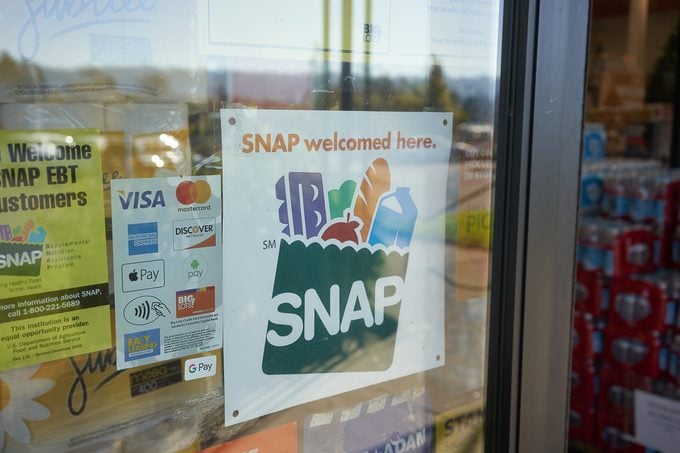
“SNAP (Supplemental Nutrition Assistance Program) helps low-income households afford groceries,” says Allen. “And Double Up Food Bucks matches SNAP dollars spent on fruits and vegetables at participating farmers markets and grocery stores.”
She adds that many farmer’s markets offer EBT/SNAP discounts, and community-sponsored agriculture (CSA) farms often offer sliding scale costs. “Search ‘your city + farmers market SNAP’ or check local food policy council websites,” she recommends.
For daily wellness updates, subscribe to The Healthy by Reader’s Digest newsletter and follow The Healthy on Facebook and Instagram . Keep reading:
- 20 Produce Mistakes You Didn’t Know You Were Making
- Do ‘Forever Chemicals’ Leak Into Your Frozen Foods in the Microwave? Experts Respond
- 14 Vegetables You Really Should Stop Avoiding
- 5 Meal Prep Tips for People Who Are Vegans or Vegetarians
Post a Comment